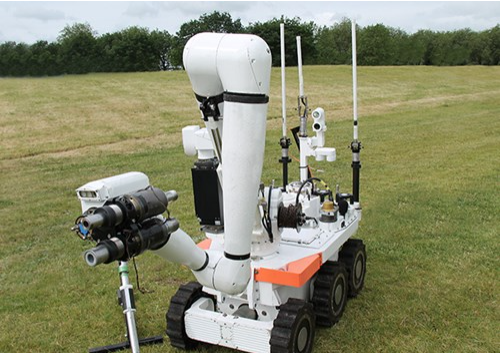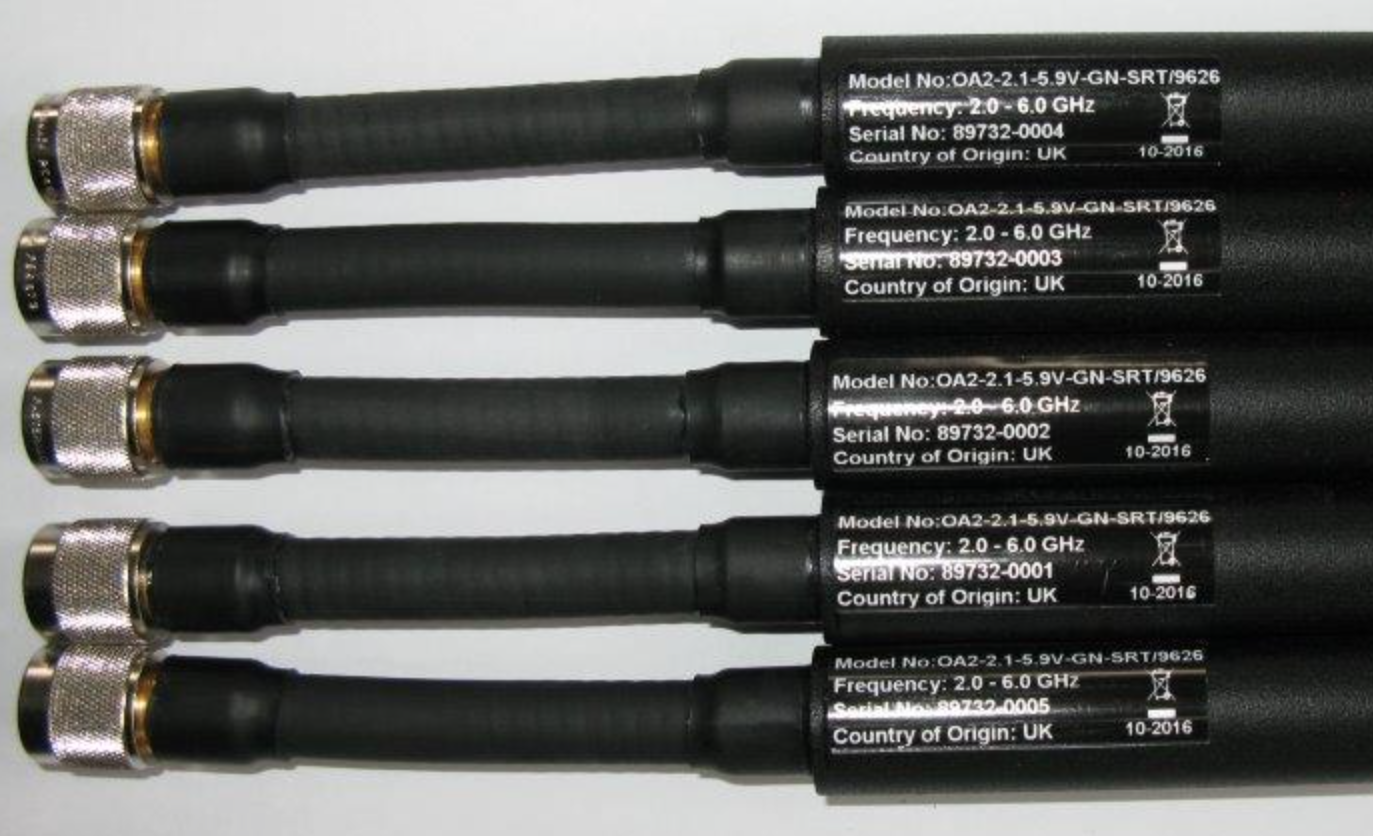
Where space is limited a single wideband Omni may be able to replace multiple antennas.
Some new designs of antennas have made a win-win for Cobham. Specifically designed for use on Ground Robots, Unmanned Vehicles, Manpacks, Broadcast Cameras and Vehicles.
Users can future proof their systems and give increased flexibility when using software defined radios due to the wideband nature of these antennas. These antennas can be used to replace several narrow-band antennas reducing a system’s ‘antenna real estate’ which is especially important on both manned and un-manned vehicles. Additionally, one antenna can fulfil all needs across multiple bands, benefitting reduced inventory for radio suppliers and users.
The Gooseneck was designed specifically to be stiff enough to remain where it has been bent even under vibration, which is essential when being used on systems where shock and vibration may be present.

OA2-2.1-5.9-GN-ST/9625 and OA2-2.1-5.9-GN-SRT/9626 each cover the frequency range 2.00 – 6.00GHz and offer gain increasing with frequency from 1dBi to almost 5dBi gain in the highest frequencies. The options have either a spinning TNC (9625) or spinning RPTNC (9626) connector.
The OA2-2.1-5.9-GN-ST/9625 and OA2-2.1-5.9-GN-SRT/9626 are also built like their counter-parts in the ‘Universal’ spring mount range, and with a rugged glass fiber radome and IP68 rated to 20m under water, means they are able to withstand heavy impacts as well as extreme weather conditions.
These ultra-wideband antennas will also be available in a range of options including spring mount and direct connector mount so please contact us to discuss options.

